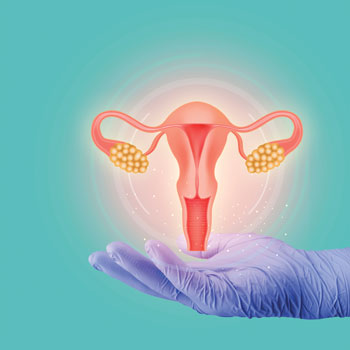Pearls on low sexual desire, OTC menopause tests
A women's health expert explains how to treat low sexual desire if it causes distress, and how to counsel patients on diagnostic testing for menopause.
Low sexual desire is the most common complaint in women. Especially as women get older, they report low sexual desire at a rate of about 40%. But only 12% report low sexual desire associated with distress. So low sexual desire does not distress everyone, but it's those women who are distressed by it that we really pay attention to. If a woman takes the time to make an appointment with me to discuss low sexual desire, then it's bothering her.
Testosterone is indicated off-label in women with hypoactive sexual desire disorder that is not otherwise explained, such as related to a medication, a chronic medical condition, a mood disorder, a relationship issue, or anything else that could be the cause of low sexual desire. Testosterone has been shown to be effective for almost all aspects of sexual functioning, but testosterone is not FDA approved for use in women. Also, when used off-label in women, the dose has to be cut down to about one-tenth of the dose used in men, which can be challenging. Compounding can often be difficult and inconsistent from batch to batch. Pellets are not recommended because they are often poor in quality and can break down early, resulting in very high testosterone levels.
There are safety data on the use of testosterone in women and major adverse cardiac events. One study published in March 8 in the Journal of Sexual Medicine used a claims database analysis of more than 16,000 women who received three or more systemic testosterone prescriptions within a year and then compared them to a propensity-matched cohort. There was no increased risk of major adverse cardiac events. In fact, the women using testosterone had a lower risk of major adverse cardiac events and a lower risk of breast cancer compared to the propensity-matched cohort. A subgroup analysis of women over the age of 55 showed that the results held true. This evidence provides some reassurance regarding cardiovascular safety of testosterone therapy in women and some reassurance regarding long-term safety.
Now, is testosterone always the answer? Absolutely not. And in fact, most of the time it's not the answer. Instead, we can delve into communication issues with a woman's partner, or determine whether low sexual desire only happened after she started an antidepressant last year and she never had it before that. Often, we can identify a cause that we can work to treat. It's also important to keep in mind that there's no specific testosterone level in a woman that would define a deficiency state. The levels are very, very low in women to begin with, but there's no level at which we say it's so low that it's a problem and it needs to be replaced.
That leads to the next pearl, of how do you counsel patients on diagnostic testing for menopause? There are several over-the-counter, direct-to-consumer tests now for menopause. Is diagnostic testing needed at home? Generally, no. Over-the-counter tests cost anywhere from $20 to $99. They're testing for follicle-stimulating hormone (FSH), estradiol, and sometimes other hormones, and they can use urine, saliva, or blood. The problem is that the FSH level is highly variable in perimenopause, and it can literally vary from day to day. It's very difficult to make an accurate diagnosis of perimenopause using one of these over-the-counter tests.
The other point is we don't need a diagnosis of perimenopause to treat symptoms. We know that women in perimenopause experience many of the same symptoms as women in menopause: hot flashes, night sweats, sleep disturbances, mood disturbances, joint aches, etc. But it doesn't mean we can't treat them without knowing their FSH level or establishing a diagnosis of perimenopause. In other words, it doesn't matter; we're going to treat them anyway.
Is diagnostic testing needed in the office? Not typically in a woman over 45 years of age with typical menopause symptoms, because anything over the age of 45 is considered the normal age.
Given that 50% of women in the United States will not be menopausal at the mean age of 52 (mean age of menopause), it's important to understand that women probably still need some contraception until menopause is confirmed either by the absence of the menstrual cycle for 12 months or until about the age of 55 when about 90% to 95% of women will be menopausal. Contraceptive options after the age of 50 include a progestin-only pill, which may be safer than an estrogen-containing pill given the increased risk of blood clot with the estrogen-containing pill, or a progestin-containing IUD, which can also be used with a postmenopausal estrogen regimen such as an estrogen patch if the woman is experiencing menopause-related symptoms.
The pearl here is to treat the patient, not the labs, and remember that symptoms typical of menopause may occur well before the last menstrual cycle. Often clinicians and women are not expecting the symptoms to occur when they're still having periods. But again, those symptoms—hot flashes, night sweats, sleep disturbances, mood disturbances, brain fog, etc.—can be treated regardless of menopause status.



